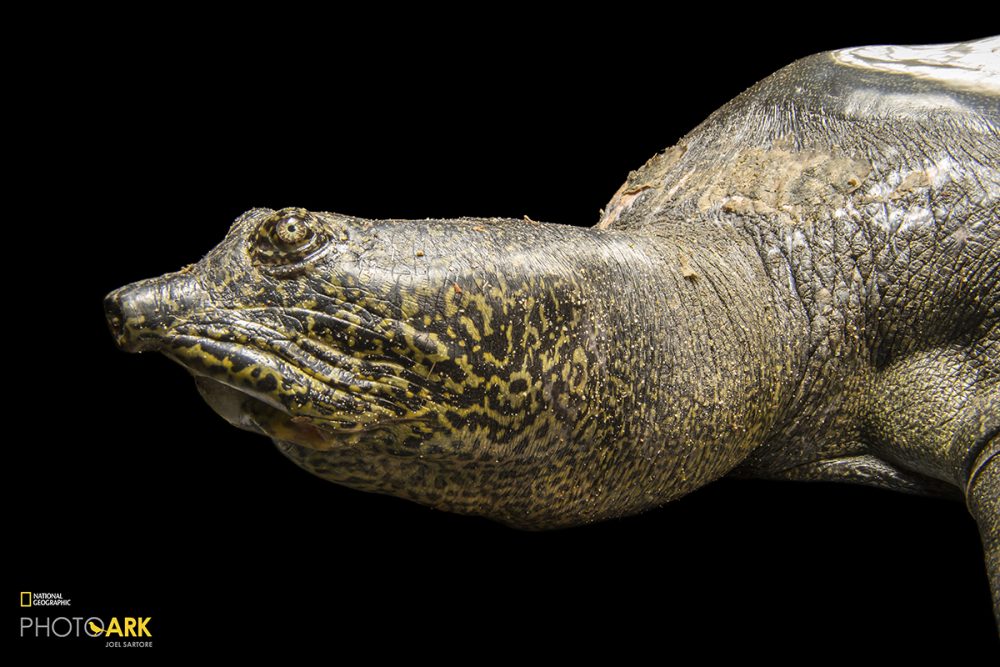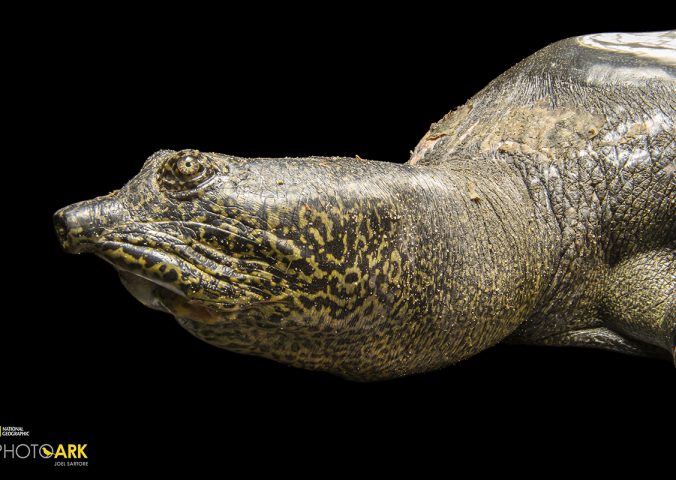About
The enormous Yangtze giant softshell turtle is the world’s rarest turtle, with only three individuals thought to remain in the world. These extraordinary turtles are teetering on the brink of extinction.
One of the remaining four individuals is in captivity at Suzhou Zoo, China, where efforts are ongoing to achieve captive breeding. However, all efforts to date to induce breeding, including artificial insemination, have failed.
There was thought to be only three surviving individuals until 2018. Researchers studying the eDNA from a lake in Vietnam identified the DNA of a Yangtze giant softshell in the lake, indicating the presence of at least one individual in the lake.
The Yangtze giant softshell turtle is one of two giant softshells in the genus Rafetus, along with the Endangered Euphrates softshell turtle, and these two species diverged from all other living species more than 40 million years ago. This is more than 10 million years before humans last shared a common ancestor with baboons!
The two Rafetus species diverged around 20 million years ago and, should the Yangtze giant softshell turtle become extinct, the Euphrates softshell will be the sole surviving member of this unique and extraordinary genus.
Historically, the main threat to this species was trade for meat and as pets. Moreover, the only confirmed area in which this species lives is seriously impacted by pollution. However, there is possibly only one surviving wild individual.
The Yangtze giant softshell turtle is listed as Critically Endangered by the IUCN Red List, but may be virtually extinct in the wild. It is listed on CITES Appendix II. The future of this species rests on the success of the captive breeding efforts or a miraculous discovery of previously unknown populations.
- Order: Testudines
- Family: Trionychidae
- Population: 3 individuals
- Trend: decreasing
- Size: >100cm (?)
- Weight: 120kg
EDGE Score
Distribution
This species is found in China, where it may be extirpated, and Vietnam.
Habitat and Ecology
This species is found in rivers and lakes and feeds on aquatic invertebrates, fish and vegetation. They lay between 20 and 80 eggs.

